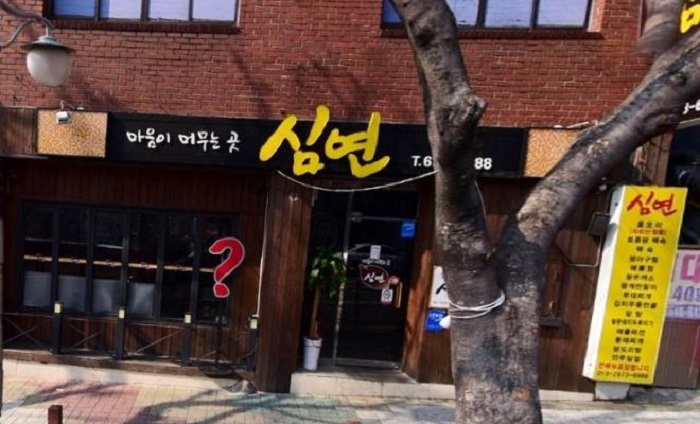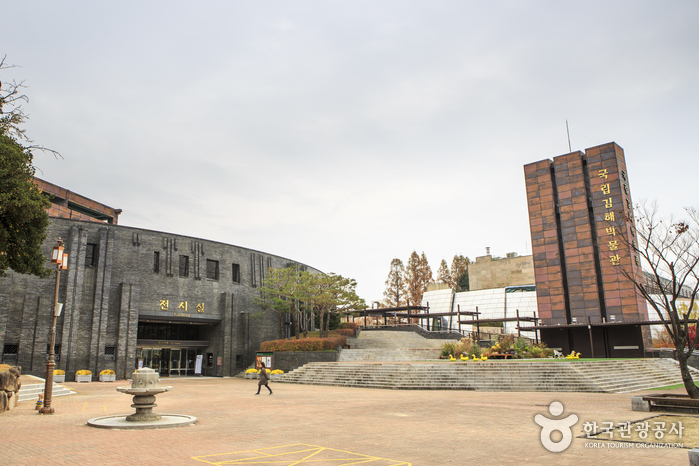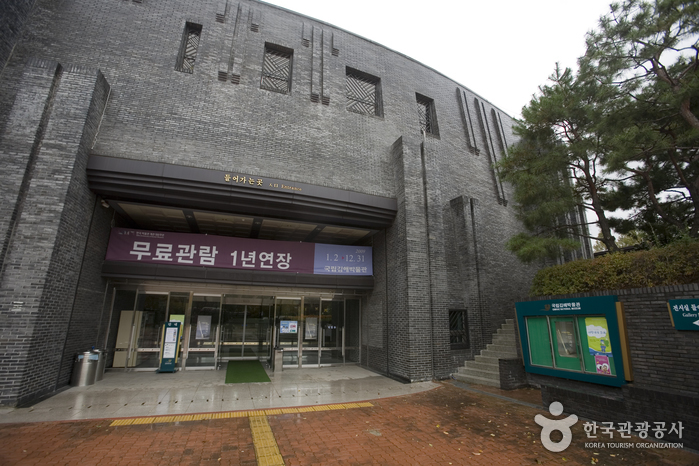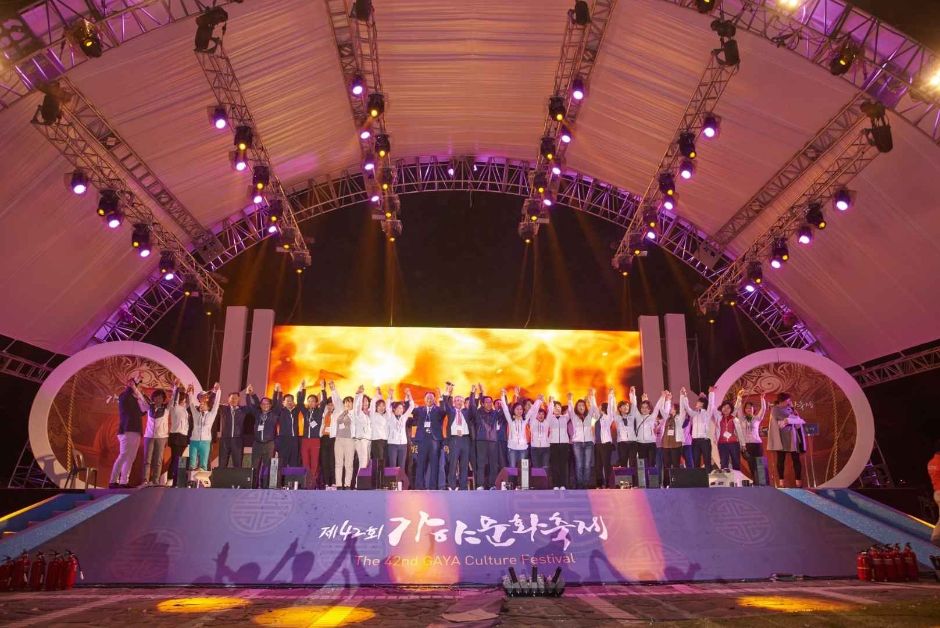Tomb of King Suro (수로왕릉)
17.9Km 2024-01-23
26 Garak-ro 93beon-gil, Gimhae-si, Gyeongsangnam-do
+82-55-332-1094
King Suro founded the Garak Kingdom in AD 42 and married Heo Hwang-ok, a princess from the Indian country of Ayuta, in AD 48. He was the founder of the Gimhae Kim family. Heo Yeop, a Yeongnam governor, gave the tomb its current look in the 13th year of the reign of King Seonjo (1580). The tomb compound includes various buildings, including the Sungseonjeon (where the ancestral tablets of King Suro and his queen are kept), Anhyanggak, Jeonsacheong, and Jegigo, as well as stone structures, such as a sindobi (tombstone) and gongjeokbi (monument established to pay homage the deceased). The tombstone in front of the royal tomb was built in the 25th year of the reign of King Injo (1647) of the Joseon dynasty. The name Sungseonjeon was bestowed on the tomb by King Gojong in the 21st year of his reign (1884).
Kudok Folk Village (구덕민속촌)
17.9Km 2020-02-20
15-17, Hakgam-daero 39beonan-gil, Sasang-gu, Busan
+82-51-311-0127
Kudok Folk Village boasts a beautiful traditional Korean house (hanok) and offers food such as fresh and soft galbi (beef short rib) which is selected with only the highest level of quality, and hanbang yuhwang-ori (smoked duck with herbs) made with 20 kinds of herbs, beoseot-jeongol (mushroom hot pot), and naengmyeon (cold buckwheat noodles). Other facilities aimed at families with children are planned to be built, like an exhibition hall of folk crafts and an animal farm.
Gimhae Korean-style house [Korea Quality] / 김해한옥체험관 [한국관광 품질인증]
17.9Km 2023-10-25
40 , Wangneung-gil, Gimhae-si, Gyeongsangnam-do
+82-55-322-4735~6
The Hanok Experience Center in Gimhae, Gyeongsangnam-do, offers guests a taste of old-time hanok life. Rooms are furnished with traditional items, while the spacious wooden floor can be used as a meeting room. Rooms in the sarangchae are on the small side but have an upper floor with scenic views. The room in the annexe building has a traditional sleeping mat surrounded by a large folding screen, and feels like a scene from a historical drama. Each room has a modern bathroom, There is a traditional experience program, and information services in English and Japanese.
Maeumi Meomuneun Got Simyeon (마음이머무는곳심연)
17.9Km 2021-03-22
27, Seokpo-ro, Nam-gu, Busan
+82-51-633-6988
A place where you can taste various Korean dishes. This restaurant's signature menu is Whole Chicken Soup. This Korean dishes restaurant is located in Nam-gu, Busan.
Sureungwon Garden (수릉원)
17.9Km 2024-01-23
35 Bunseong-ro 261beon-gil, Gimhae-si, Gyeongsangnam-do
Sureungwon Garden is a place themed around the meeting between King Suro, the founder of Gaya, and Queen Heo, who was the princess of Ayuta Kingdom, known as India. The name Sureungwon Garden also contains the meaning of an elegant forest where King Suro and Queen Heo walked together. An ecological park measuring 39,600 m2 has been created along a low ridge that connects the Tomb of King Suro, an important cultural heritage of the Gaya period; the Ancient Tombs in Daeseong-dong, the tombs of the Gaya kings; and the Bonghwang-dong Historic Site. It was created by representing the maritime kingdom of Gaya, imagining a pond of the garden where King Suro and Queen Heo used to walk, and planting prickly waterlilies and yellow floating hearts that are believed to have inhabited wetlands in the Gaya period. Trails along the cozy forest and pond make it easy to look around comfortably.
Gimhae National Museum (국립김해박물관)
17.9Km 2024-01-23
190 Gayaui-gil, Gimhae-si, Gyeongsangnam-do
The Gimhae National Museum was opened on July 29, 1998, in order to research and preserve the cultural heritage of the ancient kingdom of Gaya. The museum is at the foot of Gujibong Peak in Gimhae-si, the spot where the kingdom is believed to have been founded. The museum exhibits the cultural assets of Gaya, as well as cultural relics from the prehistoric age in the Busan and Gyeongsangnam-do areas, and the cultural heritage of Byeonhan, which was the foundation for the growth of Gaya.
The exterior of the museum is made using black bricks representing iron ore and charcoal famous during the Gaya Kingdom. There are two exhibition halls, while the walkway to the halls have approximately 1,300 artifacts in display.
Seollal Traditional & Cultural Event of Gimhae National Museum (국립김해박물관 설맞이 전통문화행사)
17.9Km 2020-03-21
190, Gayaui-gil, Gimhae-si, Gyeongsangnam-do
• 1330 Travel Hotline: +82-2-1330
(Korean, English, Japanese, Chinese) • For more info: +82-55-320-6821
To greet Seollal, one of the biggest national holidays in Korea, Gimhae National Museum hosts a “Seollal Traditional & Cultural Event.” During the event, visitors can take part in traditional activities and view regional cultural assets.
Gaya Culture Festival (가야문화축제)
18.0Km 2024-10-08
35 Bunseong-ro 261beon-gil, Gimhae-si, Gyeongsangnam-do
+82-55-330-6840
The Gaya Culture Festival celebrates the Gaya Kingdom, founded by King Kim Suro in AD 42, and its 500-year history. Gaya was quite advanced in the production of earthenware and iron implements, evidenced by the many artifacts found from that time. Through the Gaya Culture Festival, the region is continuing to preserve, build on, and develop the Gaya culture and heritage. The Gaya Culture Festival asserts Gaya’s rightful place alongside the Goguryeo, Baekje, and Silla kingdoms.
Homeplus - Busan Gamman Branch [Tax Refund Shop] (홈플러스 부산감만)
18.0Km 2024-04-18
124, Uam-ro, Nam-gu, Busan
-
Ancient Tombs in Daeseong-dong, Gimhae (김해 대성동 고분군)
18.1Km 2020-04-02
126, Gayaui-gil, Gimhae-si, Gyeongsangnam-do
+82-55-330-3934
The tumuli in Daeseong-dong, located to the east of the Royal Tomb of Kim Suro, reflect the formation and development of the Gaya Era. The Daeseong-dong Tumuli are located in the center of the shell mounds of Hoehyeon-ri, the location of the founding of the Gaya Kingdom according to local legend.
The tumuli relics were excavated by researchers from the Kyungsung University Museum from 1990 to 1992 and were found to be the common burial ground of the dominant class of the Gaya Kingdom. On the hilltops, which were viewed as prime burial places, are the tombs of kings and rulers; on the slopes are the tombs of the lower classes.
A total of 136 tumuli were found in the Daesong-dong area. Further investigation of the tumuli revealed several important and interesting facts. First, from the end of the third century, men and horses were buried alive along with the dead. Also, weapons were bent and buried as well, with many of these artifacts being unearthed among the tumuli. Other materials found in the tumuli such as cylindrical bronze items, pinwheel-shaped bronze items, and jasper items showed that Gaya was involved in trade with Japan. The Daeseong-dong Tumuli is significant in that it gives a glimpse into the political and social structure of the Gaya Kingdom, and the cultural exchange between Korea, China, and Japan.

![Gimhae Korean-style house [Korea Quality] / 김해한옥체험관 [한국관광 품질인증]](http://tong.visitkorea.or.kr/cms/resource/81/3016981_image2_1.jpg)




![Homeplus - Busan Gamman Branch [Tax Refund Shop] (홈플러스 부산감만)](http://tong.visitkorea.or.kr/cms/resource/55/2885755_image2_1.jpg)
 English
English
 한국어
한국어 日本語
日本語 中文(简体)
中文(简体) Deutsch
Deutsch Français
Français Español
Español Русский
Русский